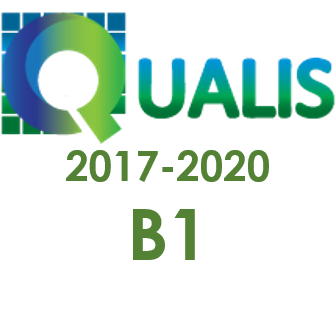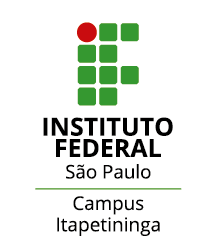Art and science in interdisciplinary science teaching
Keywords:
Science. Art. Interdisciplinarity. Science Teaching.Abstract
A possible way to become more human is through a dialogical view between Art and Science in contrast to the segmented and hierarchical view of knowledge. Based on Morin´s ideas about the complexity of knowledge, the study aims to promote a different perspective of the relations between Art and Science and how this new perspective can be explored in interdisciplinary science teaching. After an epistemic reflection on the subject, examples from the research suggesting work clues are presented to support science teachers in an interdisciplinary reconfiguration of their teaching.
Downloads
References
BACHELARD, G. L ́air et les Songes: essai sur l´imagination des forces. Paris: J. Corti, 1943.
BRAUND, M.; REISS, M. The ‘Great Divide’: How the Arts Contribute to Science and Science Education. Canadian Journal of Science Mathematics and Technological Education. v. 19, n. 3, p. 219–236, 2019.
CAGE, J. Paisagem Imaginária. Março, n. 4. New York: Peters,1951.
CACHAPUZ, A. Art and science: improving teachers´s interdisciplinary competences. Journal of Science Education, v.14, special issue, p. 5-7, 2013.
CACHAPUZ, A. Arte e Ciência no ensino das ciências. Interações, v. 31, p. 95-106, 2014.
CACHAPUZ, A.; FERREIRA, P. Bridging art and science in science education. Journal of Science Education, v. 2, n.11, p. 60 - 63, 2010.
CARAÇA, J.; CARRILHO, M. O Imaterial e o Arquipélago dos Saberes. Colóquio Ciências, v. 4, n. 12, p. 83-92, 1984.
CARRILHO, M. Epistemologia: Posição e Críticas. Lisboa: Fundação Calouste Gulbenkian, 1991.
COLUCCI-GRAY, L.; TROWSDALE, J.; COOKE, C. F.; DAVIES, R.; BURNARD, P.; GRAY, D. S. Reviewing the potential and challenges of developing STEAM education through creative pedagogies for 21st learning: how can school curricula be broadened towards a more responsive, dynamic, and inclusive form of education? London: British Educational Research Association, 2017.
CORSO, J.; ROCHA, M; GARCIA, R. Um relato de experiência sobre interações entre a ciência e as artes visuais na Educação Básica. Cadernos de Aplicação, v. 32, n. 1, p. 51-60, 2019.
CUNHA, M.; GIORDAN, M. A imagem da Ciência no Cinema. Química Nova na Escola, v. 13, n.1, p. 9 -17, 2009.
DAMÁSIO, A. O erro de Descartes. Lisboa: Publicações Europa América, 1994.
DILLON, P. A pedagogy of connection and boundary crossings: methodological and epistemological transactions in working across and between disciplines. Innovations in Education and Teaching International, v. 45, n. 3, p. 265- 262, 2008.
FARIAS, J.; AIRES, R.; ARÊDES, G.; FREIRE, A.; VALLIM, M.; GÓES, A. Linhagem Mitocondrial e os personagens do romance O tempo e o Vento: a interdisciplinaridade representada em material didático. Experiências em Ensino de Ciências, v. 12, n. 2, p.24-37, 2017.
FERREIRA, F. Arte: aliada ou instrumento no ensino das ciências? ArReDia, v.1, n.1, p.1-12, 2012.
FLICK, U. Introdução à Pesquisa Qualitativa. Porto Alegre: Artmed, 2009.
FREITAS, M.; SILVA; M.; SOUZA, J. Os móbiles são estáveis ou instáveis? Ciência e Arte para professores. Ciência em Tela, v. 12, n.1, p.1-17, 2019.
GOLDBERG, M. Arts integration: Teaching subject matter through the arts in multicultural settings. London: Routlege, 2016.
GORRI, A.; FILHO, O. Representação de temas científicos em pintura do século XVIII: um estudo interdisciplinar entre Química, História e Arte. Química Nova na Escola, v. 31, n. 3, p. 184-189, 2009.
GROTO, S.; MARTINS, A. Monteiro Lobato em aulas de ciências: aproximando ciências e literatura na educação científica. Ciência e Educação, v. 21, n.1, p.219-238, 2015.
GUIMARÃES, L.; SILVA, C. A contribuição da Arte para a formação de professores de Química. Indagatio Didatica, v. 8, n.1, 226-239, 2016.
HARRIS, A.; DE BRUIN, L. R. Secondary school creativity, teacher practice and STEAM education: An international study. Journal of Educational Change, n. 9, p.153–179, 2018.
JACOB, F. O jogo dos possíveis. Lisboa: Gradiva, Lisboa, 1985.
KEMP, M. Visualisations- the nature book of art and science. Oxford: Oxford U. P., 2000.
KUHN, T. A tensão essencial. Lisboa: edições 70, 1989.
MATIAS, A.; CARRASCO, R.; RAMOS, A; BORGES, R. Engaging children in geosciences trough storytelling and creative dance. Geoscience Communication, p. 1-18, outubro, 2019.
MEDINA, M; BRAGA, M. O teatro como ferramenta de aprendizagem da Física e de problematização da natureza da ciência. Caderno Brasileiro de Ensino da Física, v. 27, n. 2, p. 313-333, 2010.
MONTEIRO, J. Criatividade em arte, criatividade em ciência. Boletim da Sociedade Portuguesa de Química, n. 28, Série II, 1987.
MOREIRA, M. A. Oxigénio: uma abordagem filosófica visando discussões acerca da Educação em Ciências – parte 1, poder e ambição. Ciência & Educação, v.18, n. 4, p. 363-381, 2012.
MORIN, E. Pour une réforme de la pensée. Courrier de l´UNESCO, Fevrier, p.10-14, 1996.
MORIN, E; LE MOIGNE, J. L. A inteligência da Complexidade. São Paulo: Peiropólis, 1999.
NETO, H.; PINHEIRO, B.; ROQUE, N. Improvisações teatrais no Ensino de Química: interface entre teatro e cinema na sala de aula. Química Nova na Escola, v. 35, n. 2, p.100 -106, 2013.
ORNA, M. Chemistry, Color and Art. Journal of Chemical Education, v.78, n.10, p.1305-1309, 2001
PANCIERI, T; Leite P. Exposição do acervo de obras de arte do IFES: diálogos com a Ciência. Vitória: IFES, Campus Montanha, 2016.
PARKINSON, G. Surrealism, Art and Modern Science: Relativity, Quantum Mechanics, Epistemology. New Haven: Yale U.P., 2008.
PIASSI, L. A ficção científica como elemento de problematização na educação em ciências, Ciência e Educação, v. 21, n. 3, p.783-798, 2015.
PLAZA, J. Arte/Ciência, uma consciência. Comunicações e Artes, v.19, n. 29, p.24-33, 1996.
POINCARÉ, H. La valeur de la science. Paris: Flammarion, 1920.
POIRIER, H. Picasso a-t.il peint la relativité d´Einstein? Science et Vie, Avril, p.124-129, 2003.
ROTH, W. Heisemberg´s Principle and Interpretative Research in Science Education. Journal of Reserach in Science Teaching, v. 30, n.7, p. 669-680, 1993.
SANTOS, P.; AQUINO. K. Utilização do cinema na sala de aula: aplicação da química dos perfumes no ensino de funções orgânicas oxigenadas e bioquímica. Química Nova na Escola, v. 33, n. 3, p. 160-167, 2011.
SHAPIRO, J.; RUCKER, L.; BECK, J. Training the clinical eye and mind: using the arts to develop medical students’ observational and pattern recognition skills. Medical Education, n. 40, p. 263-268, 2006.
SILVA, A; REIS, J; REGO, S. Publicações sobre o ensino de Física Moderna: relações construídas entre Artes e Física. Caderno Brasileiro de Ensino de Física, v. 36, n. 2, p. 366-382, 2019.
SOUZA, R.; NEVES, S. O livro paradidático no ensino de Física - uma análise fabular, científica e metafórica da obra Alice no País do Quantum: A Física Quântica ao al¬cance de todos. Caderno Brasileiro de Ensino de Física, v. 33, n. 3, p. 1145-1160, 2016.
STROSBERG, E. Art et Science. Paris: UNESCO, 1999.
Downloads
Published
How to Cite
Issue
Section
License
Copyright (c) 2020 Revista Internacional de Pesquisa em Didática das Ciências e Matemática

This work is licensed under a Creative Commons Attribution-NonCommercial-NoDerivatives 4.0 International License.




